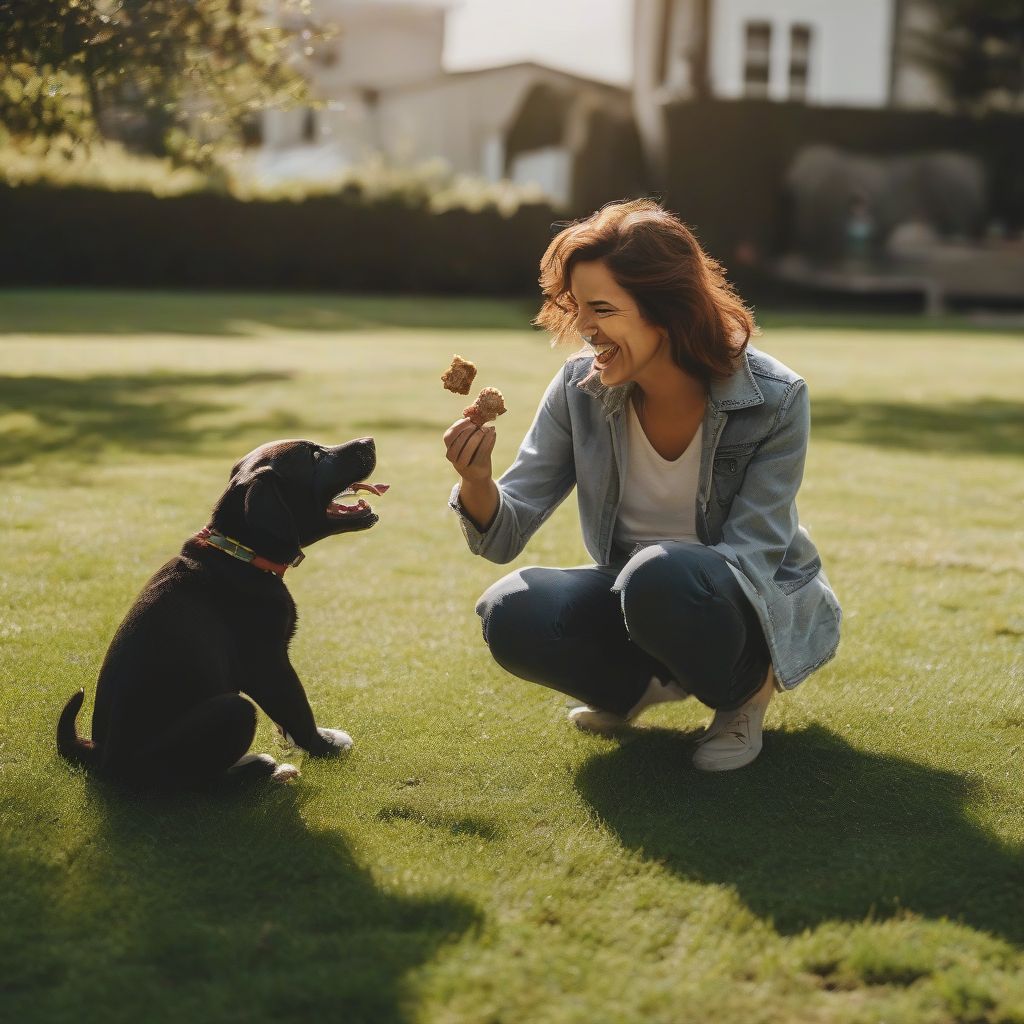Bringing a new puppy home is filled with joy, cuddles, and… the occasional puddle on the carpet. Potty training can feel daunting, but with positive reinforcement methods, it can be a much smoother and more enjoyable experience for both you and your furry friend. Forget the old-school punishments – we’re focusing on building good habits and celebrating successes!
Understanding Positive Reinforcement Potty Training
Positive reinforcement focuses on rewarding desired behaviors, rather than punishing mistakes. This method builds a positive association with going potty outside, making it more likely your puppy will repeat the behavior. Think of it like this: you’re teaching your puppy what to do, not just what not to* do.
Key Principles of Positive Reinforcement
- Consistency: A consistent schedule is key. Take your puppy out frequently, especially after waking up, eating, playing, and before bedtime.
- Rewards: Use high-value treats, enthusiastic praise, or a favorite toy to reward your puppy immediately after they eliminate outside. The quicker the reward, the stronger the association.
- Patience: Accidents happen. Don’t scold or punish your puppy. Simply clean up the mess and continue with your consistent routine.
- Observation: Learn your puppy’s signals. Whining, circling, sniffing, and squatting are all signs they need to go.
A Step-by-Step Guide to Positive Potty Training
1. Create a Potty Routine
Establish a regular feeding schedule, as this will help regulate your puppy’s elimination patterns. Take your puppy outside every 2-3 hours, as well as after naps, meals, and playtime.
2. Choose a Designated Potty Spot
Pick a specific area in your yard and consistently take your puppy there. The familiar scent will encourage them to eliminate in that spot.
3. Use a Verbal Cue
Choose a phrase like “Go potty” and use it consistently when you take your puppy to their designated spot. This helps them associate the phrase with the desired action.
4. Reward Immediately
As soon as your puppy finishes eliminating, give them a high-value treat and lots of praise. “Good potty!” delivered with enthusiasm will reinforce the positive association.
5. Clean Up Accidents Thoroughly
Accidents are inevitable. Clean the area thoroughly with an enzymatic cleaner to eliminate the odor and discourage your puppy from repeating the mistake in the same spot.
6. Supervise and Manage
Keep a close eye on your puppy, especially when they are inside. If you see them exhibiting signs they need to go, immediately take them outside to their designated spot.
7. Crate Training (Optional)
Crate training can be a helpful tool for potty training, as dogs instinctively avoid soiling their den. However, ensure the crate is appropriately sized and introduce it gradually and positively.
Common Potty Training Challenges and Solutions
Regression
Sometimes, even after successful potty training, a puppy might regress. This can be due to stress, changes in routine, or medical reasons. Consult with your veterinarian to rule out any underlying health issues.
Submissive Urination
Some puppies urinate when they are excited or nervous. Avoid making direct eye contact and bending over them, as this can be intimidating. Instead, crouch down and offer gentle praise.
Marking
Male puppies, especially, might lift their leg to mark their territory. Neutering can help reduce this behavior.
 Positive Potty Training Puppy
Positive Potty Training Puppy
Consistency is Key: A Veterinarian’s Perspective
Dr. Emily Carter, a veterinarian with over 15 years of experience, emphasizes the importance of consistency in potty training. “Positive reinforcement combined with a consistent routine is the most effective way to potty train a puppy,” she says. “Patience and understanding are crucial, as every puppy learns at their own pace.” She recommends using a crate and establishing a clear schedule for feeding and potty breaks. This advice echoes the sentiments of many professional dog trainers.
Conclusion
Potty training your puppy using positive methods takes time, patience, and consistency. Remember to focus on rewarding desired behaviors, creating a positive association with going potty outside. By following these steps and understanding your puppy’s individual needs, you’ll be well on your way to a happy, accident-free home.
Don’t hesitate to share your potty training successes and challenges in the comments below! We’d love to hear about your experiences. And if you found this guide helpful, please share it with other puppy parents embarking on this journey!



